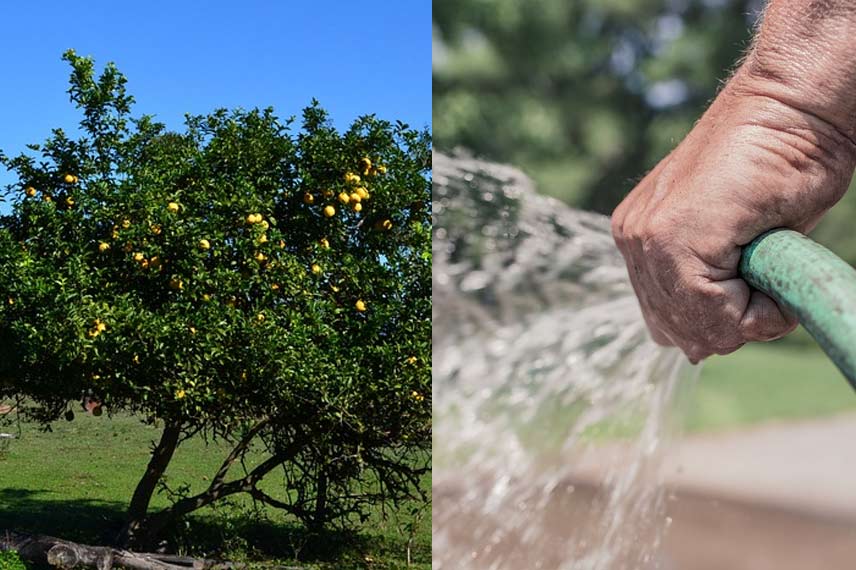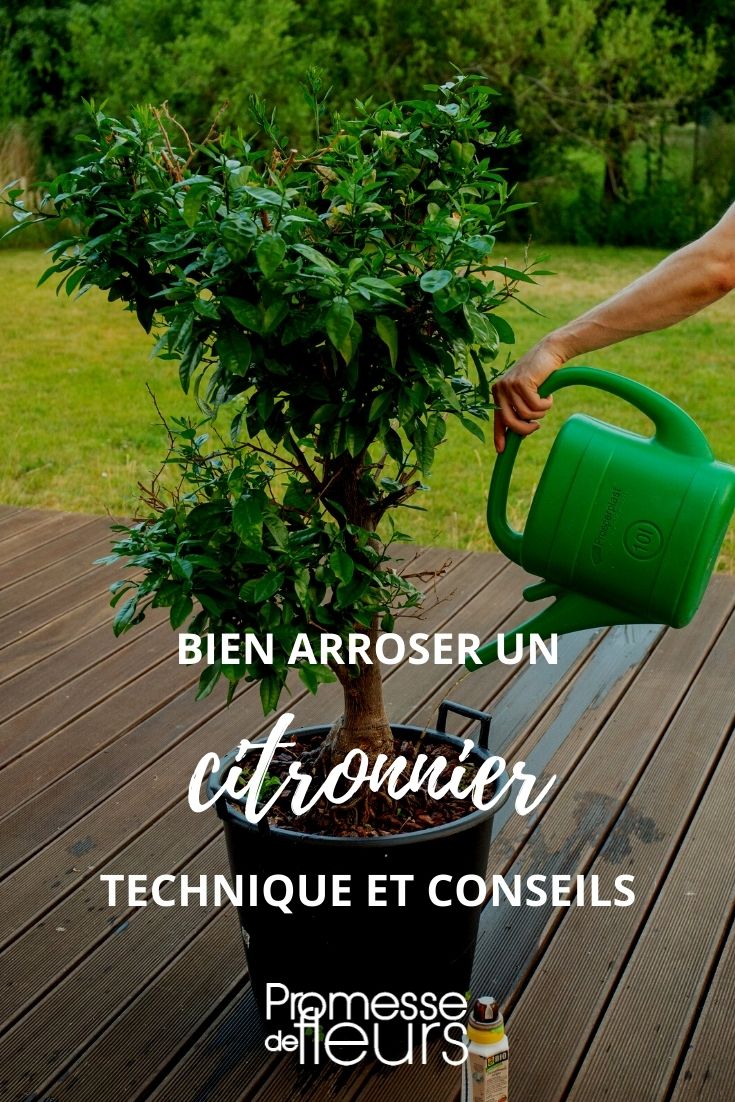Lemon, true star of citrus trees, is also fairly easy to grow. Good management of its watering is however necessary to ensure its development, and also to ensure its flowering and fruiting. Without an adequate water supply, your lemon harvests are likely to be poor. Moreover, a lemon tree has significant water needs, particularly when grown in a pot, which is the case in most parts of France.
Watering frequency by season, type of water to favour... Discover in detail how to water a lemon tree correctly.
Understanding water needs of lemon tree
First understand that lemon tree is very greedy for nutrients as well as for water. While care is simple, it must be regular and attentive. Three parameters are essential to its growth, health and fruiting:
- rich applications of fertiliser;
- watering perfectly adapted to its needs;
- sunlight and warmth.
How to tell if a lemon tree needs water?
A lemon tree lacking water may show discomfort by yellowing of its leaves. Do not rely on this sign alone, because it can also indicate nitrogen deficiency or excess water.
By contrast, manifest signs of water shortage are:
- leaves pointing downwards;
- a very dry substrate.
How to tell if a lemon tree is overwatered?
Excessive watering can cause root rot, a disease fatal to the plant.
As we have seen, leaves yellowing quickly can indicate either a lack or an excess of water.
Other signs that a lemon tree is suffering from excess water include:
- leaves tending to point upwards;
- substrate appearing muddy;
- small pools of water forming in soil for in-ground specimens.

Which water to use for watering a lemon tree?
Most specialists recommend using good-quality water for watering a lemon tree. Rainwater is the most advisable. Indeed, lemon tree is very sensitive to water high in salt. Moreover, rainwater is more acidic than tap water.
If you have no choice but to use tap water, take precautions to remove chlorine and make it purer and softer:
- let it stand for a few days;
- or filter it using a carafe intended for that purpose (a stick of activated charcoal can also be used).
In either case, use water at room temperature. This will avoid thermal shock.
Watering a lemon tree grown in open ground
If you grow your lemon tree in open ground, know that first year after planting is also when the tree needs most water. You should then water it daily but without excess.
Once well established, the tree will only need watering in case of hot spells or prolonged drought. In those circumstances, water preferably in the evening.
WARNING: Never wet foliage of your lemon tree during watering. Like many plants, this fruit tree is susceptible to fungal diseases.
Note: alongside watering, this citrus tree also appreciates several applications of fertiliser during the year to support flowering, fruiting and growth of fruits.
Watering a potted lemon tree
A potted lemon tree has much greater water needs than a lemon tree in open ground. Indeed, roots cannot here seek what they need in soil. Moreover, container growing causes much faster evaporation of soil. Also, watering naturally tends to run straight to bottom of pot. Be careful that water never stagnates at bottom of pot, nor in its saucer.

Solenne’s tip: to avoid root rot, raise the pot of your lemon tree above its saucer. To do this, place a good layer of gravel or clay balls in the saucer, and set the tree’s pot on top.
During growing season, potted lemon tree must be watered very regularly, that is as soon as surface of substrate is dry. In hot weather, waterings may even be daily, whatever tree’s age. In winter, stop both watering and fertiliser applications.
Note: if water needs are greater for potted lemon tree, the same applies to fertiliser inputs. Substrate tends to become depleted much faster in a pot. Add fertiliser to substrate 1 to 2 times per month.
Watering a lemon tree using drip irrigation
Best irrigation system for citrus trees is drip irrigation. Common in gardens, this watering method can be applied to plants in open ground as well as to potted specimens. Drip irrigation kits specific to container cultures are available.
Advantages of drip irrigation for lemon tree:
- it allows continuous, localised waterings directly at plant base, limiting evaporation losses;
- Moreover, drip irrigation supplies water very slowly, in line with needs, allowing substrate to absorb it gradually, drastically reducing risk of accumulation and therefore root rot;
- Method also allows better assimilation of nutrients, such as phosphorus or potassium, which are otherwise not very mobile;
- In open ground, system helps distribute water around entire circumference of lemon tree roots;
- It also limits appearance of adventive plants, since soil surface remains dry, reducing germination of weed seeds;
- Drip irrigation also reduces risk of fungal diseases.
































Comments